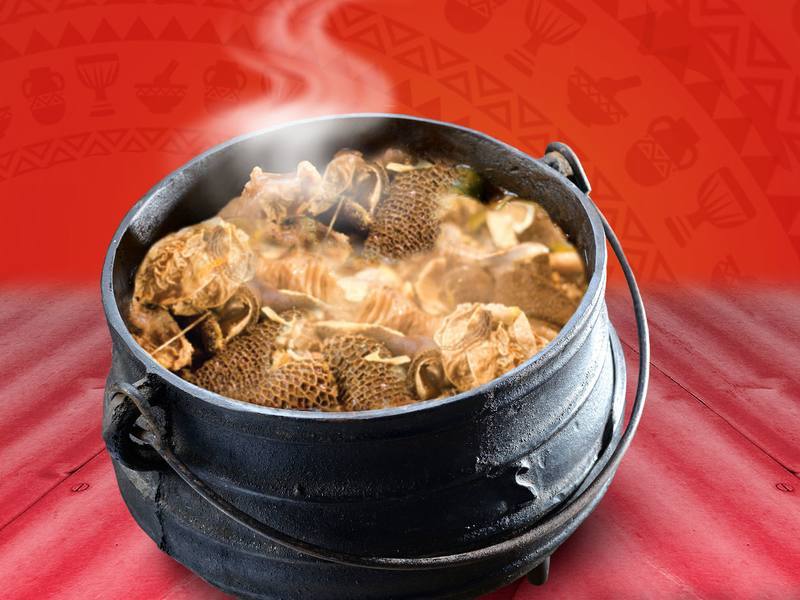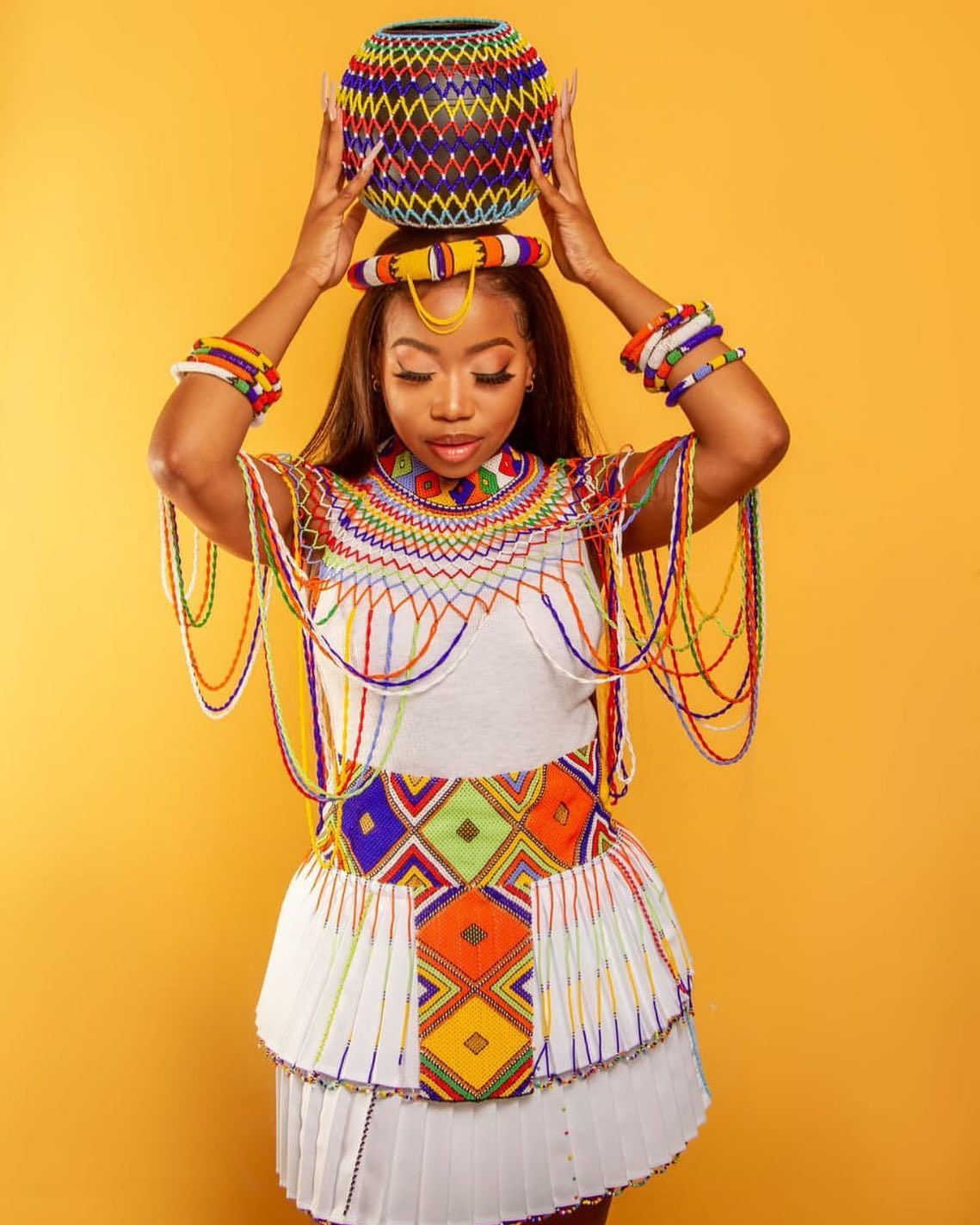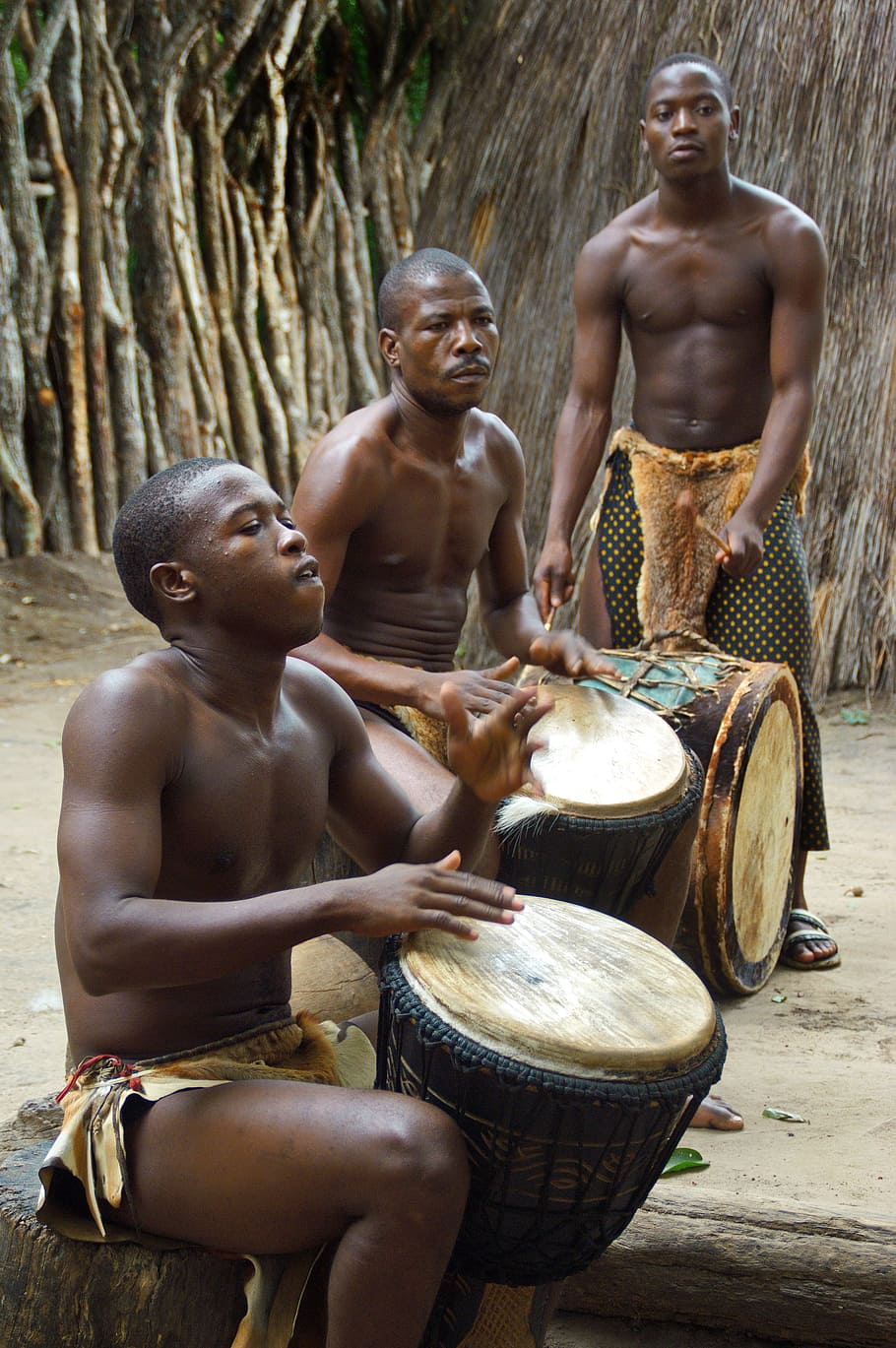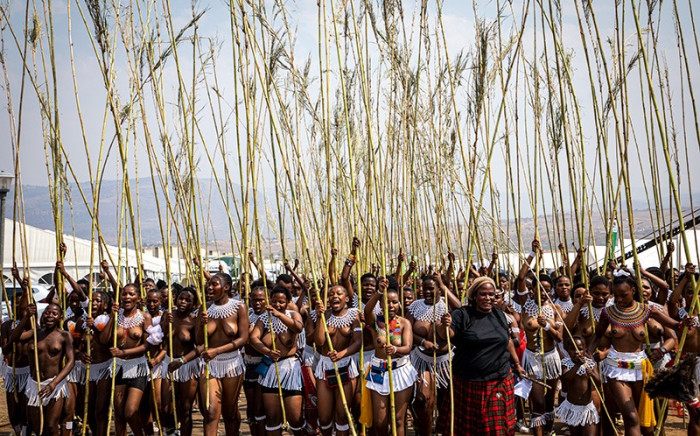Guide to Zulu Culture, Traditions and Cuisine

The Zulus enjoy showing off their power, starting with the practice of leadership inside their own houses. Women tend to the children, the home, and the crucial task of making beer, while males take care of the cattle, their wives, and the family. Boys are exposed to their warrior ancestry through stick fighting at a young age, while men continue to sit on a hide or a shield as a symbol of pride in their capacity for battle.
 Zulu beading is a crucial component of their cultural heritage. With a variety of shapes, colors, and symbolism, beads are utilized as a means of symbolic and communication. For instance, whether a boy or girl is married is indicated by the angle of the tip of a triangle bead. As a result, a married lady will wear beads that are made of two triangles joined together to form a diamond shape, which is the Zulu community's sign for fertility. Men who are married typically wear beading that has triangles with two tips that make an hourglass shape. Each of the seven hues used in beads stands for a certain set of feelings, spirituality, or social standing.As a result, you can anticipate seeing single ladies wearing white beaded clothing to symbolize purity, while a Zulu man wearing green beaded clothing to symbolize satisfaction. The Zulu culture and societal conventions are specific to the usage of color codes and shapes in beading. Consider it twice the next time you are in a local market before purchasing a piece of beading. If you choose the wrong one, men may start pursuing you under the impression that you are single!
Zulu beading is a crucial component of their cultural heritage. With a variety of shapes, colors, and symbolism, beads are utilized as a means of symbolic and communication. For instance, whether a boy or girl is married is indicated by the angle of the tip of a triangle bead. As a result, a married lady will wear beads that are made of two triangles joined together to form a diamond shape, which is the Zulu community's sign for fertility. Men who are married typically wear beading that has triangles with two tips that make an hourglass shape. Each of the seven hues used in beads stands for a certain set of feelings, spirituality, or social standing.As a result, you can anticipate seeing single ladies wearing white beaded clothing to symbolize purity, while a Zulu man wearing green beaded clothing to symbolize satisfaction. The Zulu culture and societal conventions are specific to the usage of color codes and shapes in beading. Consider it twice the next time you are in a local market before purchasing a piece of beading. If you choose the wrong one, men may start pursuing you under the impression that you are single!
 The Zulu tribe's cuisine is a reflection of their extensive history and culture. The diet that the Zulus often eat is vegetarian and consists of grains and vegetables, despite the fact that they live in the middle of a wilderness and wildlife. Only on significant occasions are animals like oxen sacrificed. Beer, fermented milk, and traditional African porridge made of maize and sorghum are staple foods in every Zulu home. Meat dishes' serving sizes reflect the men's ages and socioeconomic standing.
The Zulu tribe's cuisine is a reflection of their extensive history and culture. The diet that the Zulus often eat is vegetarian and consists of grains and vegetables, despite the fact that they live in the middle of a wilderness and wildlife. Only on significant occasions are animals like oxen sacrificed. Beer, fermented milk, and traditional African porridge made of maize and sorghum are staple foods in every Zulu home. Meat dishes' serving sizes reflect the men's ages and socioeconomic standing.

The Zulu people enjoy dressing simply, much as they still lead straightforward lives in the twenty-first century. Their clothing choices are a reflection of their traditional values and reliance on nature. Women's clothing serves as a representation of their age, marital status, and eligibility. While a young girl wears short grass skirts and beaded strings to signify her single status and eligibility, the colors of the beads change as she matures into a lady and becomes engaged. When a Zulu lady becomes engaged, she covers her body and grows her hair as a sign of respect for her prospective husband's family.Married women dress in thick, knee-length cowhide skirts and caps to obscure their faces.
Guys display their military strength through their dress and accessories. Only married guys typically wear a warrior headband with this. While sparingly, animal skin and feather are used in regular clothing to cover various body areas. The skin is a representation of the Zulu man's social standing. For instance, only members of the royal family or tribal chiefs are allowed to use leopard skin. The ibheshu, injobo, and isinene cover the lower half, while the amambatha covers the shoulders.

Zulu festivals require drums and are frequently accompanied by dance and chanting. Every traditional ritual and celebration, including the beginning of womanhood and marriage ceremonies, uses the ingungu drum. Thus, in Zulu culture, dances are used to commemorate important life events. the aforementioned............. The purpose of the spear-based hunting dance is to give warriors courage before they go hunting. Another dance, which is only performed on royal occasions, makes use of a miniature shield to symbolize the men's military solidarity. Another common battle dance seen at weddings is the Indlamu, which involves two dancers stomping ferociously to the beat of drums. Only single girls participate in the Reed Dance, a distinctive annual event that involves them dancing while carrying a long reed above their heads.

I love the fact that you included everything about our tradition . I hope youngster will get a chance to read this and be Informed ❤️🥺
ReplyDeleteBeautifully written and very informative !!
ReplyDeleteInteresting ☺️ thanks for promoting our beautiful culture
ReplyDeleteVery interesting! Keep it up
ReplyDeleteUzulu🫷
ReplyDeleteVery informative and interesting
ReplyDeleteThis comment has been removed by the author.
ReplyDeleteThis post takes me back to my roots... It very interesting
ReplyDeleteVery beautiful thanks for reminding us our roots
ReplyDeleteVery interesting this reminds us our Roots
ReplyDeleteThank you for sharing our beautiful culture and our customs out there🫶
ReplyDeleteNgingebe umzulu ngibe yini
ReplyDelete😆 bengifuna ukusho lokho nami
DeleteZulu culture is so beautiful 🥺👍such a lovely moment
ReplyDeleteIt’s funny cos some other things I didn’t know but a Zulu Thanks for information really interesting
ReplyDeleteVery informative and interesting I love how you articulated all aspects in our culture ❤️
ReplyDeleteZulu culture and customs are beautifully captured in your piece. I always bought beads without considering what they mean or represent. Love that you can leave pieces of our culture for people to consume and learn.
ReplyDelete